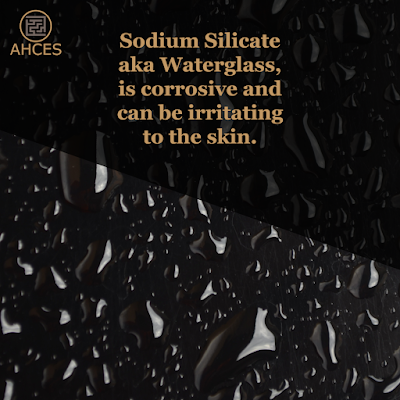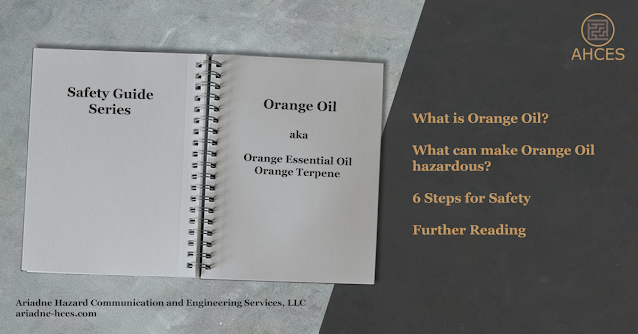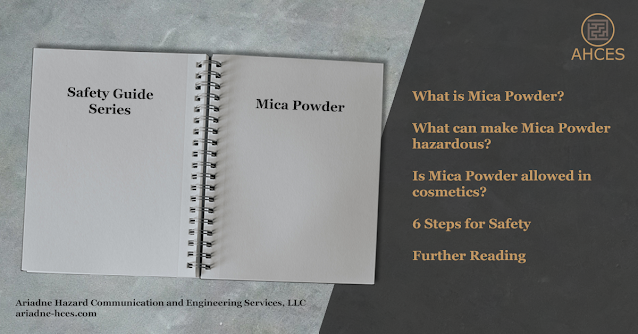Sodium Silicate Safety Guide
What is Sodium Silicate?
Sodium silicate, also known as waterglass, is an inorganic salt. It has many applications, including as an adhesive, a laundry detergent booster, and in silica gel desiccant. In industrial applications, sodium silicate is also used in fireproofing and foundry molds.
Sodium Silicate has the CAS Numbers 6834-92-0 and 1344-09-8.
The CAS Number is used to identify sodium silicate as an ingredient on safety data sheets (SDS) and other safety documentation. When looking for sodium silicate as an ingredient in adhesives or other products, look for either CAS Number within the composition table.
Notable Properties of Sodium Silicate
In the dry state, sodium silicate is clear in its crystalline state and white when powdered. Sodium silicate is readily soluble in water and is available in liquid form, primarily as an adhesive.
What Makes Sodium Silicate Hazardous?
Sodium silicate is corrosive and correspondingly irritating to the skin, eyes, and mucus membranes. If ingested, sodium silicate can cause damage to the digestive system and can cause severe nausea.
Sodium Silicate Frequently Asked Questions
Is Sodium Silicate Waterproof?
Pure sodium silicate is soluble in water and will dissolve. Other components in a product containing sodium silicate may not be water-soluble. A waterproof sealant applied over sodium silicate may also prevent it from dissolving if exposed to water.
Is Sodium Silicate Safe for Skin?
No, sodium silicate is a corrosive material and will irritate exposed skin. In the case of a large quantity of contact or prolonged exposure, sodium silicate could cause a chemical burn. Fortunately, sodium silicate is water soluble and can be washed off.
In the event of an incident involving sodium silicate, Section 4 of a Safety Data Sheet contains first-aid information. Be sure to seek medical attention from a licensed medical professional if necessary.
6 Steps for Safety
Step 1: Read the Warnings
When working with a product for the first time, always read all the safety documents first. This includes safety data sheets, which should be provided by the manufacturer or importer of the sodium silicate. There may also be an OSHA chemical label or a Consumer Protection label on the packaging of the sodium silicate product. These documents all contain important information on the hazards of the product and instructions on how to mitigate those hazards.
Different compositions in different products may cause additional hazards to be present beyond the properties of pure sodium silicate. Be sure to familiarize yourself with the differences between separate sodium silicate products.
Step 2: Prepare Your Workspace
Creating a safe workspace, sometimes referred to as engineering control, is a key component of working safely with any potentially hazardous substance.
Since the primary hazard of sodium silicate it the fact it is caustic and can cause chemical burns, the ability to quickly wash off any sodium silicate that contacts the skin or eyes is very important.
Washing out the eyes can be done with an eyewash station. It is possible to purchase an attachment to a skink which will redirect water toward the eyes when opened. It is also possible to purchase sterile saline bottles designed for use as a portable eyewash.
Washing the skin will vary by the amount of contact. For a small area of contact, washing with a sink is sufficient. For a large area of contact, quickly drenching the whole body is necessary. For home settings, a hose or conventional shower should be sufficient. For industrial settings, an emergency deluge shower should be made available in most instances.
Step 3: Gather Your PPE
For sodium silicate, you will need the following PPE.
- Eye Protection
- Safety goggles with create a seal around the eyes are needed to prevent any airborne sodium silicate powder, or liquid sodium silicate splash, from reaching the eyes.
- Open safety glasses, which do not have a sealing surface, will not work in preventing dust from reaching the eyes.
- Gloves
- Basic disposable gloves will prevent sodium silicate from touching the skin on the hands and causing irritation.
- Long Sleeves
- Long sleeves will prevent sodium silicate from touching the skin on the arms and causing irritation.
- Either a long-sleeved shirt, long-sleeved coat, or disposable sleeves will work.
Step 4: Clear Your Workspace
Having a clear workspace is an important part of safety. Clutter can cause accidents and can prevent you from noticing if something has spilled.
This is also a good time to double-check that any engineering controls, including eye and body washing stations, are working and readily accessible.
If you are working in a shared space, make sure anyone around you can also remain safe when you are working with sodium silicate. For those working at home, this can include family members and pets.
Step 5: Do The Work
If engineering controls and PPE are used properly, working with sodium silicate has minimal hazards.
If work cannot be completed in one sitting, be sure to properly seal any sodium silicate containers to prevent spills or accidental release when not in use.
Step 6: Clean Up
Dust generation should be avoided when cleaning up. Either a vacuum with a filter or a damp cleaning cloth can be used to pick up spilled or stray sodium silicate powder while preventing dust generation.
Be sure to dispose of any waste in accordance with local regulations, which can vary by State and county.
Further Reading
The National Library of Medicine has a PubChem article on Sodium Silicate as well as a Hazardous Substances Database Entry.
Check out the Safety Guide Series
Hub for more safety guides.
Sources Cited
National Center for Biotechnology Information (2024). PubChem Compound Summary for CID 23266, Sodium silicate. Retrieved October 25, 2023 from https://pubchem.ncbi.nlm.nih.gov/compound/Sodium-silicate.
National Center for Biotechnology Information (2024). PubChem Annotation Record for SODIUM SILICATE, Source: Hazardous Substances Data Bank (HSDB). Retrieved October 25, 2023 from https://pubchem.ncbi.nlm.nih.gov.
Original Posting Date: Oct. 25, 2023
Last Updated: Feb. 12, 2024






Comments
Post a Comment